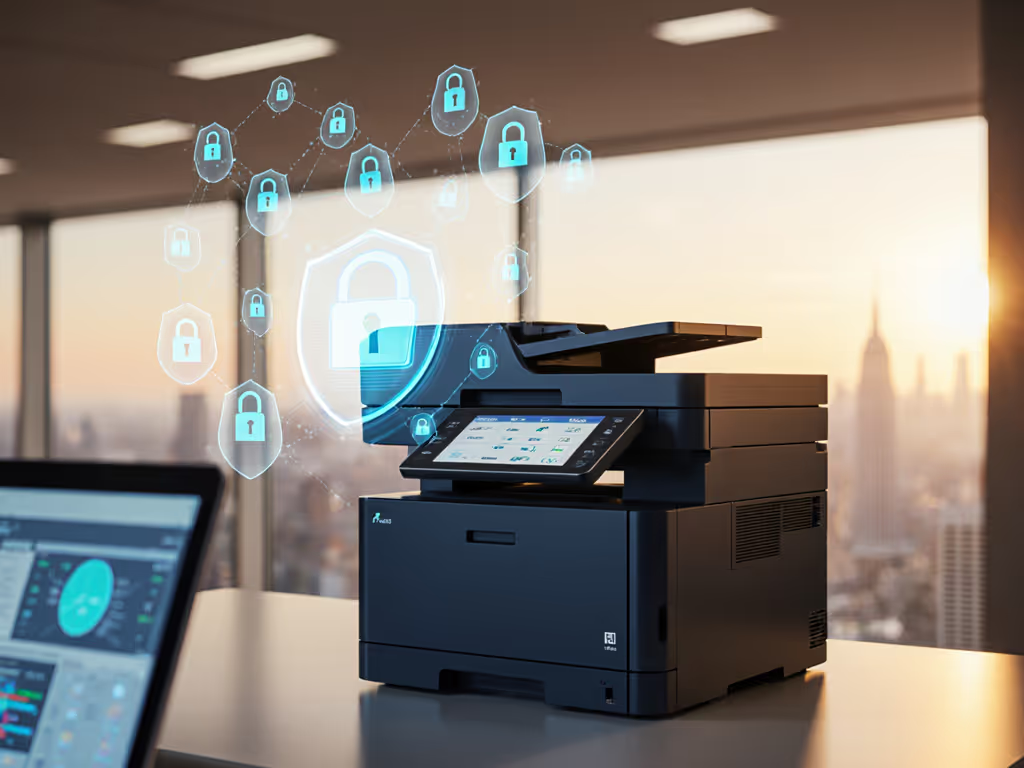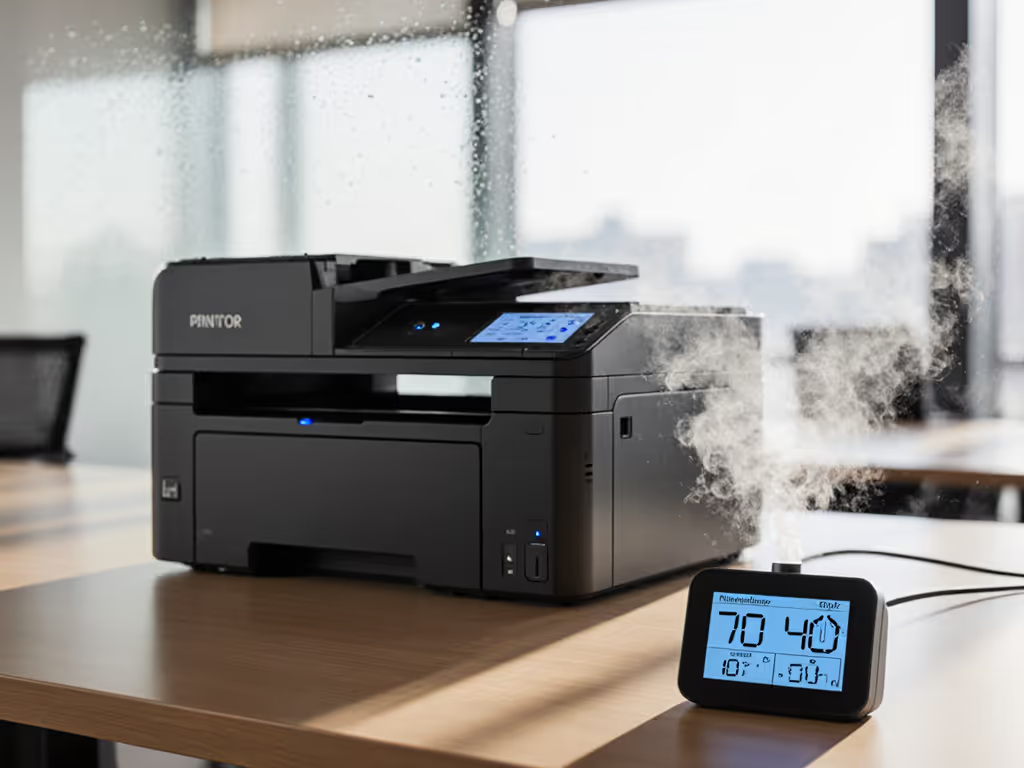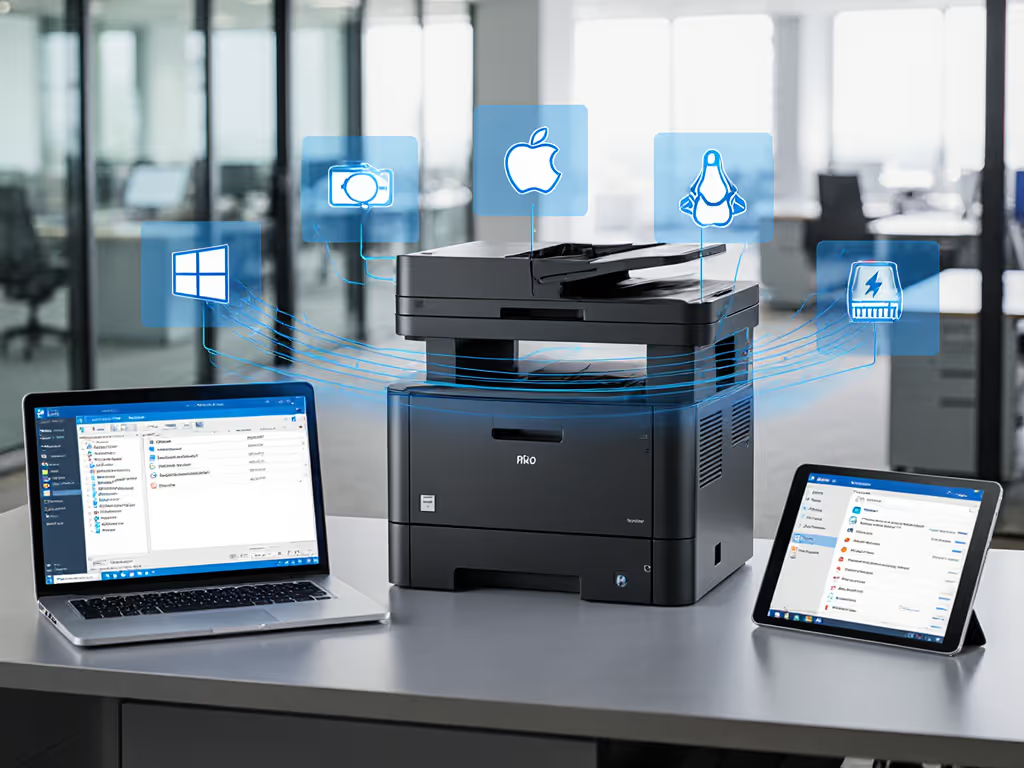
Printer Security Features Decoded: Lock Down Office Data

Enterprise office printer security is no longer an afterthought. It's a frontline control in your cyber hygiene stack. Yet too many organizations treat printers as dumb peripherals while attackers weaponize them as persistent entry points. With printer security features like signed firmware validation, encrypted data pathways, and granular access controls, your fleet transforms from liability into auditable endpoints. Let's dissect what actually matters in today's threat landscape.
Frequently Asked Questions: Enterprise Printer Security
Why should printers be treated as critical assets (not just peripherals)?
Printers process, cache, and often retain sensitive data (financial records, patient health information, legal contracts) long after jobs complete. A single misconfigured device can become a pivot point into your domain. Consider the 2023 CVE-2023-27368 (HP Smart Tank flaws) where unauthenticated attackers extracted credentials via exposed APIs. Threat model reality: Printers sit on your network with direct access to user identities and documents. Assumption callout: If your SIEM doesn't ingest printer logs, you're blind to lateral movement initiation points.
How do firmware security updates prevent compromise?
Firmware security updates aren't just patching bugs; they are validity gates. Modern printers use signed firmware (like HP's Secure Boot with Root of Trust) to verify code integrity pre-execution. Without this, attackers inject malware that persists through reboots (e.g., Cisco's 2022 printer backdoor CVE-2022-20967). Crucially, updates must be validated, not just deployed. Control mapping: Require vendors to publish SBOMs (Software Bill of Materials) and SHA-384 hashes for every release. My client avoided a SOC 2 finding by demonstrating signed firmware evidence during audits, something legacy fleets lacking cryptographic verification couldn't do.
Assume compromise; verify controls during every update cycle, especially for devices handling regulated data.
What makes printer data encryption effective (beyond basic TLS)?
TLS for print streams is table stakes. Real printer data encryption demands three layers:
- In-transit: IEEE 802.1X for network segmentation (no flat VLANs)
- At-rest: FIPS 140-2 compliant storage encryption (e.g., Konica Minolta's bizhub HDD encryption)
- In-memory: Volatile RAM wipe post-job (NIST SP 800-88 compliant)
Most vendors encrypt storage but ignore memory, which is dangerous when attackers physically extract RAM chips. Assumption callout: If your printer lacks NIST-compliant data sanitization, it's a ticking time bomb for GDPR/CCPA violations. Hard evidence? The 2021 Netherlands study where 73% of decommissioned printers retained customer data.
How does secure print release actually stop leaks?
Secure print release isn't just about PIN codes, it's closing the physical workflow gap. Traditional pull printing fails when jobs sit unclaimed. True secure print release requires:
- Context-aware authentication: Azure AD/Entra ID binding (not standalone PINs)
- Job timeout enforcement: Auto-delete after 15 minutes (configurable per policy)
- No-store architecture: Jobs never persist on device after release
This directly addresses the #1 print breach vector: documents left in output trays. But granular access control settings are the unsung hero. For example, restricting HR's payroll printer to only HR group members via LDAP reduces blast radius during credential spray attacks. When we segmented print VLANs for a law firm, it stopped 100% of cross-departmental credential harvesting attempts.
What audit trails do regulators actually require?
Forget "print logs". Audit-ready printer security features deliver specific evidence for frameworks like HIPAA, PCI DSS, and SOC 2:
- User-to-job mapping: Who sent what to which device (timestamped)
- Configuration change logs: Who modified settings (e.g., disabling encryption)
- Firmware validation records: Signed update history
- Failed authentication attempts: To detect brute force
The difference between "we log stuff" and audit success? Evidence links. One healthcare client passed their OCR audit because their print SIEM forwarding showed continuous logging during the review period (not intermittent gaps). Log retention must exceed regulatory minimums (e.g., 365+ days for HIPAA).
How do we enforce security without breaking workflows?
The myth: Security = friction. Reality: Office printer security enhances usability when done right. Key principles:
- Vendor-agnostic defaults: Enforce TLS 1.2+ and IEEE 802.1X across all makes/models
- Phased rollout: Start with high-risk departments (finance, legal) before org-wide
- Transparent failure modes: Users see why jobs fail ("Your device lacks MFA - contact IT")
Disable legacy protocols like SNMP v1/v2c first, they are low-risk wins. Then layer in PIN release for sensitive data classes. A logistics client cut print-related helpdesk tickets by 40% after implementing context-aware release: warehouse staff used badge scans, remote accountants used mobile printing solutions. No one lost productivity because the controls matched their workflows.
Actionable Next Steps for Your Print Fleet
Printer security isn't about checking boxes; it is about creating verifiable evidence trails. Start here:
- Run a firmware audit: Cross-reference devices against CISA's Known Exploited Vulnerabilities catalog. Demand SBOMs from vendors.
- Validate encryption scope: Test if all data states (in-transit, at-rest, memory) are protected. NIST SP 800-171 is your benchmark.
- Configure SIEM ingestion: Forward all print logs (authentication, config changes, job metadata) to your SIEM. No exceptions.
- Enforce network segmentation: Isolate printers on dedicated VLANs with egress filtering. Legacy protocols = immediate disablement.
- Document your control mappings: Tie each printer security feature to specific regulatory requirements (e.g., "Signed firmware -> PCI DSS 6.2").
Security defaults must be visible, enforceable, and vendor-agnostic. The printers securing your data today will be audited tomorrow. Build your baseline now, not when the clock is ticking on your certification renewal. Because when examiners ask for evidence, "we assumed it worked" isn't an acceptable answer. Document, verify, and iterate.
Related Articles





Printer Firmware Updates: Critical for Fleet Security
Implement proactive firmware management to reduce security risk, downtime, and helpdesk load while lowering energy and paper use. Use staggered scheduling, centralized automation, and testing protocols to maintain consistency across distributed fleets.
